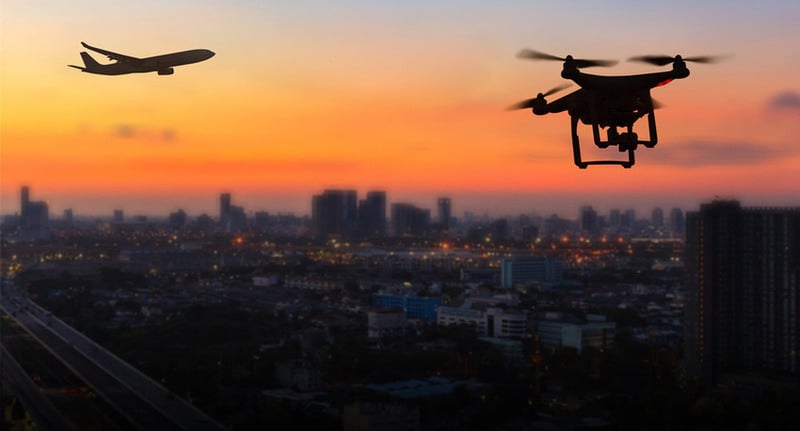The aviation industry is rapidly evolving with the rise of Uncrewed Aerial Vehicles (UAVs), commonly known as drones. UAVs are increasingly used in diverse sectors, including agriculture, emergency response, and logistics, as well as being popular for recreational use and photography. As more UAVs fill the skies, a critical challenge arises: ensuring their safe coexistence with traditional crewed aircraft. This blog explores the intricacies of shared airspace and the solutions paving the way for harmonious operations.
The Rise of UAVs
UAVs have revolutionised many industries due to their cost-effectiveness and low barriers to entry. Their applications are vast and varied, from monitoring crop health in agriculture to delivering medical supplies in remote regions to providing real-time reconnaissance and intelligence at a wildfire. UAVs are significantly more numerous than crewed aircraft, with estimates suggesting there are dozens of drones for every crewed aircraft. The lower barriers to entry for using a drone—lower cost, easier control, and in most cases less or no training required—make them accessible to a wider audience, including many people with no background or training in aviation.
Crewed Aircraft: The Established Giants
Crewed aircraft, including helicopters and fixed-wing planes, have long been essential in aviation, serving critical roles in medical emergencies, law enforcement, firefighting, transportation, and agriculture. Even as UAVs start to catch up in size and power, there are many advantages to having a skilled aviator at the controls, and crewed aircraft are still invaluable in many scenarios, including around cities, in agriculture, and in firefighting roles. However, they often operate in the same low-altitude airspace as drones, necessitating careful coordination. As UAVs become increasingly common, pilots will find themselves sharing airspace with drones more regularly.
The Challenge of Shared Airspace
Several challenges emerge as UAVs and crewed aircraft operate in the same low-altitude airspace. Safety concerns are paramount, as preventing collisions is crucial due to the increased risk of accidents at low altitudes. The existing regulatory framework primarily caters to manned aircraft, and updating these regulations to include UAVs is essential for safe operations. The regulation of drones is particularly challenging due to their sheer numbers, the small size of many drones (often weighing less than 250 grams), and the fact that most drones are recreational. The proliferation of unregistered recreational drones adds another layer of complexity, as many drone pilots lack formal aviation training or background, and it is not considered practical to license thousands of recreational drone pilots.
The small size of drones can make them hard to see, increasing collision risks. Current systems like ADS-B (Automatic Dependent Surveillance-Broadcast) have limitations for UAV integration due to cost, weight, and power constraints, and the sheer number of drones makes having them use ADS-B Out impractical.
The threat posed by drones is real, recollecting the infamous “Drone Gate” back in 2018 when Gatwick Airport came to a halt for 2 days due to drone sightings around the airport and as larger drones become more common, the risk of serious damage in a collision also becomes a significant threat.
Solutions for Harmonious Coexistence
Manufacturers are already building safety features into drones, including limiting altitude, not allowing flight near high-risk areas such as airfields, and providing systems for law enforcement to track drones. Many UAVs are equipped with automated collision avoidance systems that can detect and avoid obstacles autonomously, reducing collision risks. Simple measures like making drones more visible in the air can also enhance safety.
Drone technology has progressed quickly, but regulations have not kept up. Regulators worldwide need to ensure drone regulations are up to date and fit for purpose. Many regulators are investigating Uncrewed Aircraft Traffic Management (UTM) systems , which will work alongside existing crewed aircraft traffic management systems to manage aircraft operating together.
Increasing awareness and education among UAV operators about safe practices and regulations is crucial to minimise risks. While recreational UAV operators don’t require a licence or permit, education will be the primary way regulators can promote safer operations by UAV pilots.
To conclude, the integration of UAVs and crewed aircraft in shared airspace is a complex but manageable challenge. Through advanced technology, updated regulations, and comprehensive training, these two types of aircraft can coexist safely and efficiently. As the skies become busier, continuous collaboration among industry stakeholders will be essential for a harmonious and productive aerial environment that allows UAVs to coexist safely with crewed aircraft.
